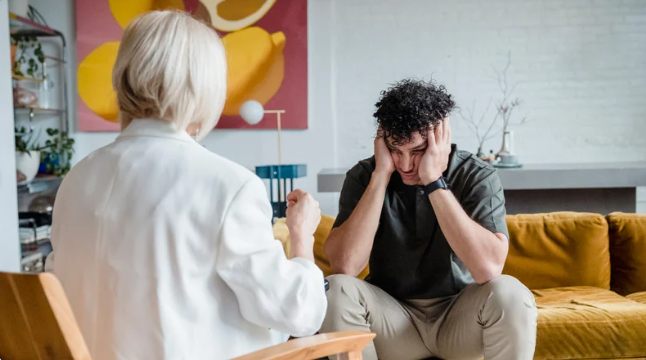
Struggling with both addiction and mental health challenges at the same time can feel like fighting two battles without enough backup.
For many, weekly therapy simply doesn’t provide enough support, yet full-time hospitalization can feel overwhelming, expensive, and nearly impossible to balance with work or family life.
That’s where Dual Diagnosis Intensive Outpatient Programs (IOPs) come in. Research shows that nearly 60% of people with substance use disorders also live with a co-occurring mental health condition, and treating one without the other often leads to relapse.
Dual diagnosis IOPs are designed to tackle both problems together, offering at least nine hours of evidence-based therapy each week, enough structure for real progress, while still allowing people to continue with jobs, family responsibilities, and daily routines.
In this article, you’ll discover exactly how dual diagnosis IOPs provide integrated care, practical support, and affordable alternatives to inpatient treatment.
Whether you or someone you love is navigating addiction alongside depression, anxiety, or another mental health challenge, you’ll find out how these programs can restore stability, improve quality of life, and create a sustainable path to recovery without putting everything else on pause.
What is Dual Diagnosis IOP?
A dual diagnosis intensive outpatient program (IOP) treats people who have both substance use disorders and mental health conditions at the same time.
Unlike weekly therapy sessions, IOPs provide at least 9 hours of structured treatment per week through group therapy, individual counseling, and support services.
The “dual diagnosis” part means the program addresses both problems together rather than treating them separately.
This integrated approach matters because about 60% of people with substance use disorders also have mental health conditions.
How IOPs Support Daily Life Balance?
One of the most significant advantages of an IOP is its ability to integrate intensive treatment with a person’s ongoing daily life.
This balance is achieved through carefully designed program structures that prioritize both recovery and real-world responsibilities.
1. Structured Yet Flexible Scheduling
IOPs meet several times per week but allow people to live at home and maintain their responsibilities.
Programs typically run 10-20 hours weekly across 3-5 days, giving patients structure without the full-time commitment of residential treatment.
This schedule helps people practice recovery skills in real-world settings. They can apply coping strategies learned in group sessions to actual workplace stress or family conflicts the same day.
2. Integrated Treatment Approach
The most effective dual diagnosis IOPs treat both conditions simultaneously rather than addressing them separately. Studies show integrated treatment generally outperforms non-integrated approaches for people with co-occurring disorders.
Integrated care means the same treatment team coordinates psychiatric medication, addiction counseling, and therapy sessions. This prevents conflicting advice and reduces the burden of navigating multiple providers.
3. Practical Support Services
Many IOPs include case management to help with housing applications, transportation, and benefits enrollment. Research shows these concrete supports are essential for engaging high-need patients who might otherwise struggle to attend treatment regularly.
Case managers might provide taxi vouchers for appointments or help someone apply for disability benefits. By removing these barriers, patients can focus their energy on recovery rather than logistics.
4. Evidence-Based Therapies
Quality IOPs use proven treatment methods like cognitive behavioral therapy (CBT) and dialectical behavior therapy (DBT).
CBT shows consistent, moderate effects in reducing substance use across different substances and delivery formats.These therapies teach practical skills for managing cravings, regulating emotions, and preventing relapse.
Group sessions allow people to learn from others facing similar challenges while individual therapy addresses personal issues.

How Do IOPs Provide Cost and Accessibility Advantages?
Accessing effective treatment shouldn’t be an insurmountable financial or logistical challenge.
IOPs offer significant benefits in terms of both affordability and availability, making quality care more attainable for many.
1. Lower Cost Than Inpatient Care
IOPs cost significantly less than residential treatment or psychiatric hospitalization. Medicare now covers IOP services through per-day payments that are much lower than inpatient rates.
For many people, IOPs provide adequate intensity without the high cost of 24-hour care. This makes treatment more accessible and sustainable over time.
2. Expanding Access Through Multiple Settings
IOPs can be offered by hospitals, community mental health centers, federally qualified health centers, and rural health clinics. This variety of settings helps bring treatment closer to where people live and work.
Rural health clinics and federally qualified health centers are particularly important for reaching underserved communities that might not have access to hospital-based programs.
3. Telehealth Options Show Promise
During the pandemic, many programs moved online with encouraging results.
Virtual IOP studies found comparable outcomes to in-person treatment for many patients, especially when programs were designed for remote delivery.
However, Medicare currently requires IOP services to be provided in person, which limits access for people in rural areas or those with mobility challenges.
What Are the Real-World Outcomes of Dual Diagnosis IOPs?
The ultimate measure of any treatment program is its impact on individuals’ lives. Research consistently highlights the positive and tangible results achieved through dual diagnosis IOPs.
1. Symptom Improvement and Functioning
Research consistently shows IOPs reduce problem severity and increase days of abstinence at follow-up.
Studies find IOPs often produce similar outcomes to inpatient care for appropriately selected patients.
The key is matching the right people to the IOP level of care. Those who are medically stable but need more support than weekly therapy tend to do well in IOPs.
3. Employment and Housing Stability
IOPs that include vocational support show improved employment outcomes and engagement in education.
By maintaining work and housing during treatment, people preserve important sources of stability and self-worth.
Longer-duration engagement is associated with better functioning and reduced acute care use, suggesting IOPs work best when connected to ongoing support services.

What Current Challenges and Gaps Exist in Dual Diagnosis IOPs?
Despite their proven effectiveness, dual diagnosis IOPs still face hurdles in widespread implementation and accessibility.
Addressing these challenges is crucial to ensuring more people can benefit from this critical level of care.
Limited Dual Diagnosis Capability
Despite high rates of co-occurring disorders, only 18% of addiction programs and 9% of mental health programs were rated as “dual diagnosis capable” in a large multi-state assessment.
This gap means many people receive fragmented care that addresses only one condition, reducing treatment effectiveness.
Workforce Shortages
Behavioral health workforce shortages limit the availability of intensive services like IOPs.
Programs need multidisciplinary teams including therapists, case managers, and medical staff trained in both addiction and mental health treatment.
Geographic Access Barriers
National facility data shows uneven distribution of treatment programs, with rural areas particularly underserved.
While telehealth could help bridge these gaps, current Medicare coverage restrictions limit this option.
Why Should You Consider a Dual Diagnosis IOP?
Dual diagnosis IOPs fill a crucial gap in the treatment system. They provide intensive support for people who need more than weekly therapy but don’t require hospitalization.
When properly implemented with integrated care, practical support, and evidence-based treatments, IOPs can help people maintain their daily responsibilities while building recovery skills.
The recent expansion of Medicare coverage represents an important step forward, but policy changes are still needed.
Allowing telehealth delivery and investing in workforce development could significantly expand access to this effective level of care.
For the millions of Americans dealing with both addiction and mental health challenges, well-designed IOPs offer hope for recovery without completely disrupting their lives.
The evidence shows these programs work, now we need to make them more widely available.
Conclusion
Dual Diagnosis Intensive Outpatient Programs (IOPs) offer a crucial solution for those facing both addiction and mental health issues.
By providing integrated, evidence-based care with flexible scheduling, IOPs allow individuals to receive comprehensive treatment while maintaining their daily lives.
This approach significantly reduces relapse risks and improves overall well-being, offering a practical and effective path to recovery.
If you or someone you care about is navigating these challenges, MARR is here to help. Contact us today or fill out our online form to schedule your IOP consultation.
Let us support you in building a healthier, more stable future.
